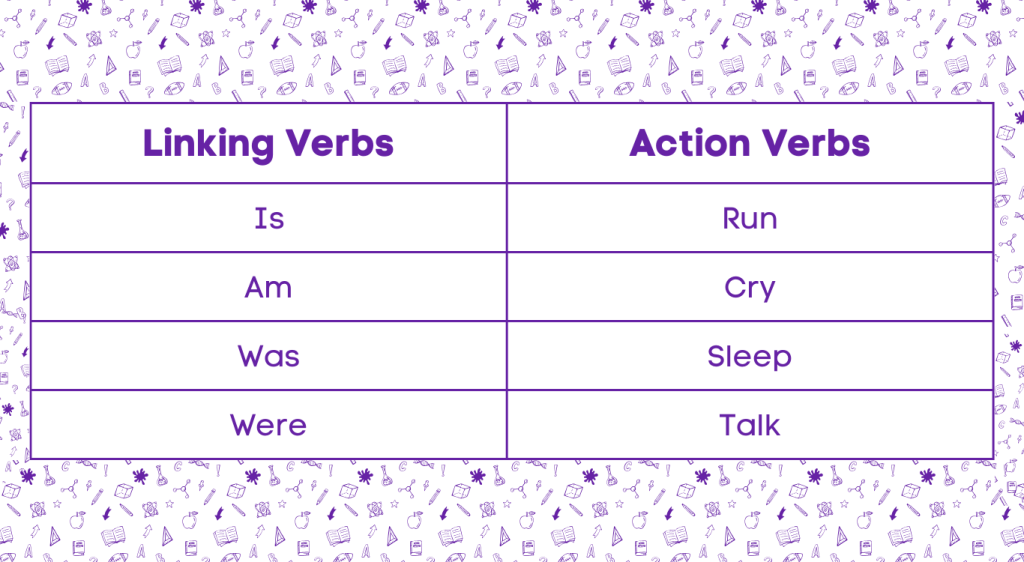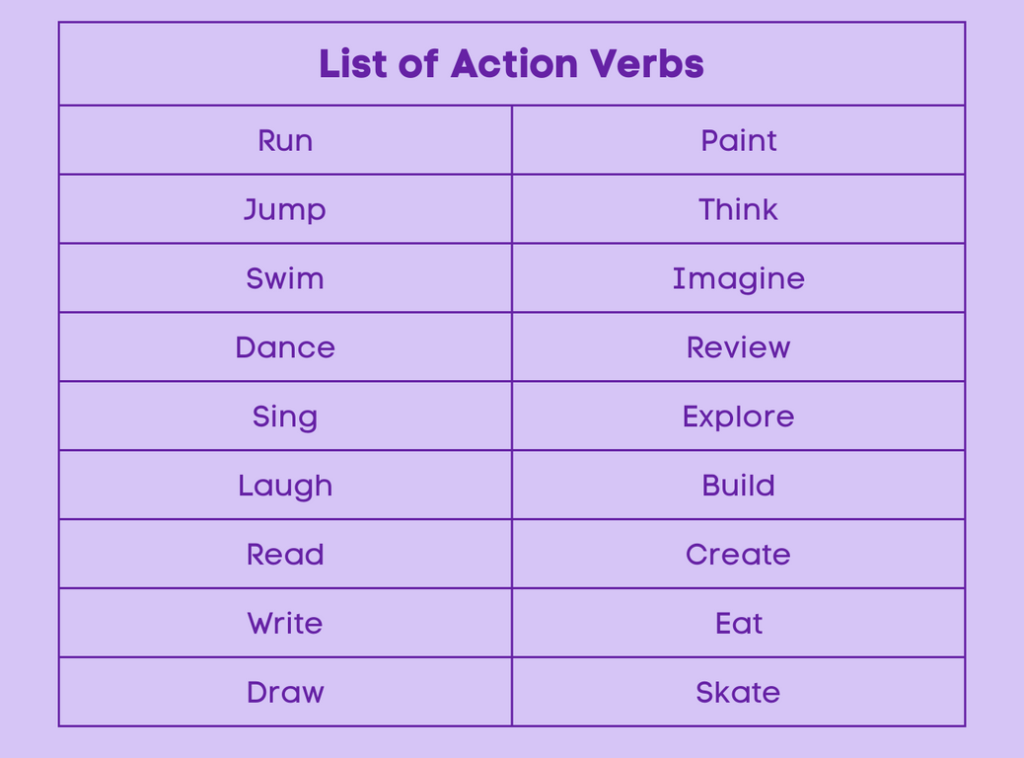Understanding Action Verbs: A Guide for Kids
Table of Contents
Introduction
Action Verbs
In the world of grammar, action verbs play a crucial role in expressing the actions or activities performed by the subject of a sentence. Understanding action verbs is essential for kids to enhance their writing and communication skills. Let’s explore the concept of action verbs and how they differ from linking verbs.
Analogy of Definition
What is an Action Verb?
Action verbs are words that express physical or mental actions. They show what someone or something is doing. For example, “run,” “jump,” “laugh,” “think,” “eat,” and “write” are all action verbs. These verbs bring life to a sentence by describing the actions performed by the subject.
Method
Linking Verbs vs. Action Verbs
Linking verbs, unlike action verbs, do not express action. Instead, they connect the subject of the sentence to a noun or an adjective that describes or renames the subject. Examples of linking verbs include “is,” “am,” “are,” “was,” and “were.” Understanding the difference between linking and action verbs is important to construct meaningful sentences.

List of Action Verbs

Examples
Using Action Verbs in Sentences
Example 1: The cat ran across the yard.
Example 2: She jumped over the puddle.
Example 3: They laughed at the funny joke.
Quiz
Tips and Tricks
1. Action Verb Challenge
Tip: Look for words that describe actions or activities in a sentence to identify action verbs.
2. Linking or Action Verb?
Tip: Action verbs show actions, while linking verbs connect the subject to a noun or an adjective.
3. Action Verb Adventure
Tip: Action verbs express what someone or something is doing, such as playing, running, or laughing.
4. Find the Action Verb
Tip: Action verbs bring life to a sentence by describing the actions performed by the subject.
5. Action Verb or Linking Verb?
Tip: Linking verbs do not express action; they connect the subject to a noun or an adjective.
Real life application
Story: “The Action Verb Quest”
Join Lily and her friends on an exciting quest to identify action verbs in real-life scenarios.
Challenge 1: The Playground Adventure
Lily and her friends visited the playground, where they observed children running, jumping, and laughing joyfully.
Challenge 2: The Science Experiment
In science class, the students observed the chemical reactions and recorded their findings in their notebooks.
Challenge 3: The Music Performance
During the music performance, the talented singer entertained the audience with her beautiful voice, while the dancers performed gracefully on stage.
FAQ's
Like? Share it with your friends
